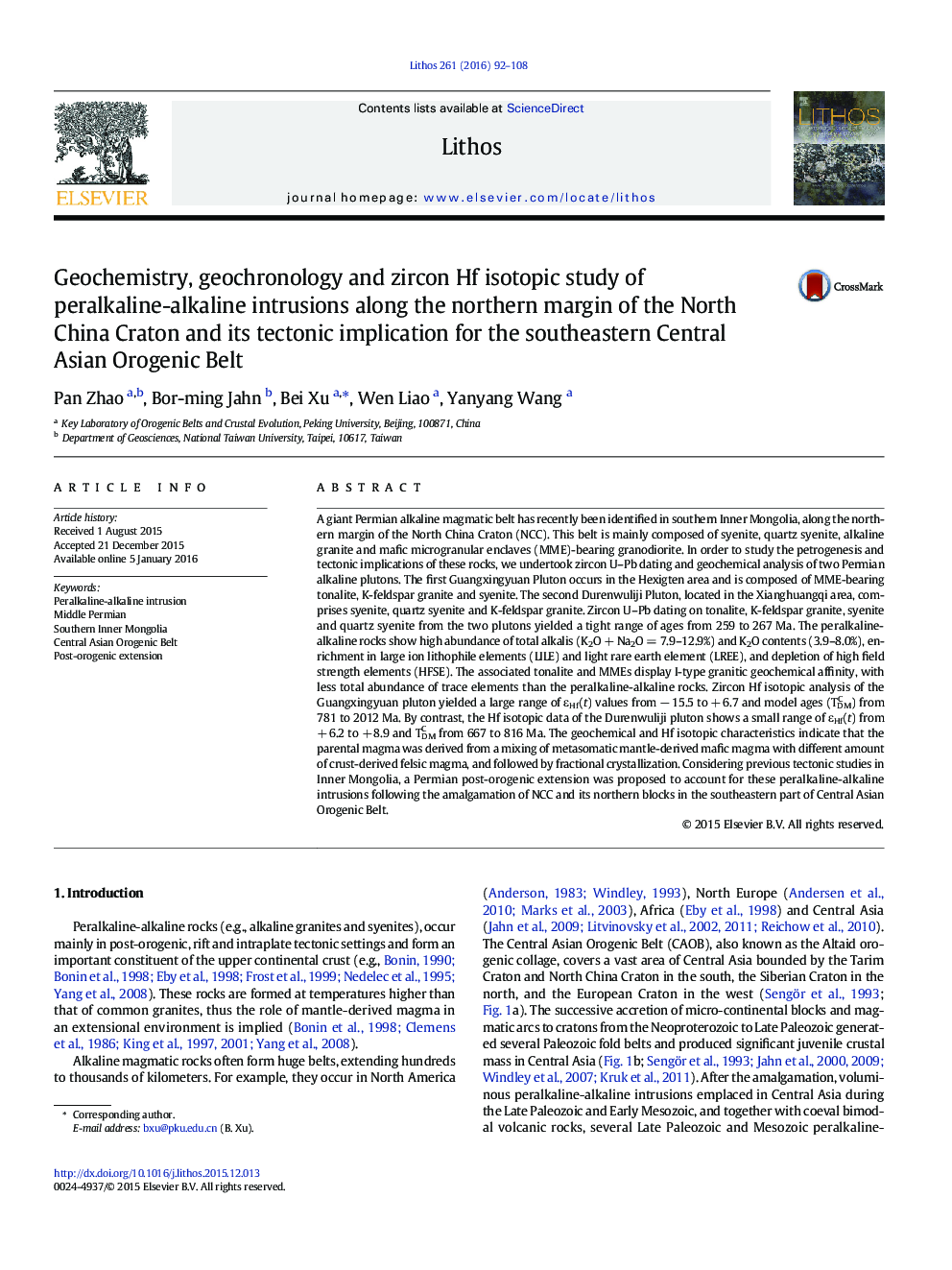| Article ID | Journal | Published Year | Pages | File Type |
|---|---|---|---|---|
| 4715549 | Lithos | 2016 | 17 Pages |
•A Permian alkaline magmatic belt is identified along the northern margin of NCC.•Peralkaline-alkaline rocks yielded zircon U–Pb ages from 261 to 267 Ma.•A mixing of metasomatic mantle-derived mafic magma with different amount of crust-derived magma is proposed.•A Permian post-orogenic extension is proposed.
A giant Permian alkaline magmatic belt has recently been identified in southern Inner Mongolia, along the northern margin of the North China Craton (NCC). This belt is mainly composed of syenite, quartz syenite, alkaline granite and mafic microgranular enclaves (MME)-bearing granodiorite. In order to study the petrogenesis and tectonic implications of these rocks, we undertook zircon U–Pb dating and geochemical analysis of two Permian alkaline plutons. The first Guangxingyuan Pluton occurs in the Hexigten area and is composed of MME-bearing tonalite, K-feldspar granite and syenite. The second Durenwuliji Pluton, located in the Xianghuangqi area, comprises syenite, quartz syenite and K-feldspar granite. Zircon U–Pb dating on tonalite, K-feldspar granite, syenite and quartz syenite from the two plutons yielded a tight range of ages from 259 to 267 Ma. The peralkaline-alkaline rocks show high abundance of total alkalis (K2O + Na2O = 7.9–12.9%) and K2O contents (3.9–8.0%), enrichment in large ion lithophile elements (LILE) and light rare earth element (LREE), and depletion of high field strength elements (HFSE). The associated tonalite and MMEs display I-type granitic geochemical affinity, with less total abundance of trace elements than the peralkaline-alkaline rocks. Zircon Hf isotopic analysis of the Guangxingyuan pluton yielded a large range of εHf(t) values from − 15.5 to + 6.7 and model ages (TDMC) from 781 to 2012 Ma. By contrast, the Hf isotopic data of the Durenwuliji pluton shows a small range of εHf(t) from + 6.2 to + 8.9 and TDMC from 667 to 816 Ma. The geochemical and Hf isotopic characteristics indicate that the parental magma was derived from a mixing of metasomatic mantle-derived mafic magma with different amount of crust-derived felsic magma, and followed by fractional crystallization. Considering previous tectonic studies in Inner Mongolia, a Permian post-orogenic extension was proposed to account for these peralkaline-alkaline intrusions following the amalgamation of NCC and its northern blocks in the southeastern part of Central Asian Orogenic Belt.
